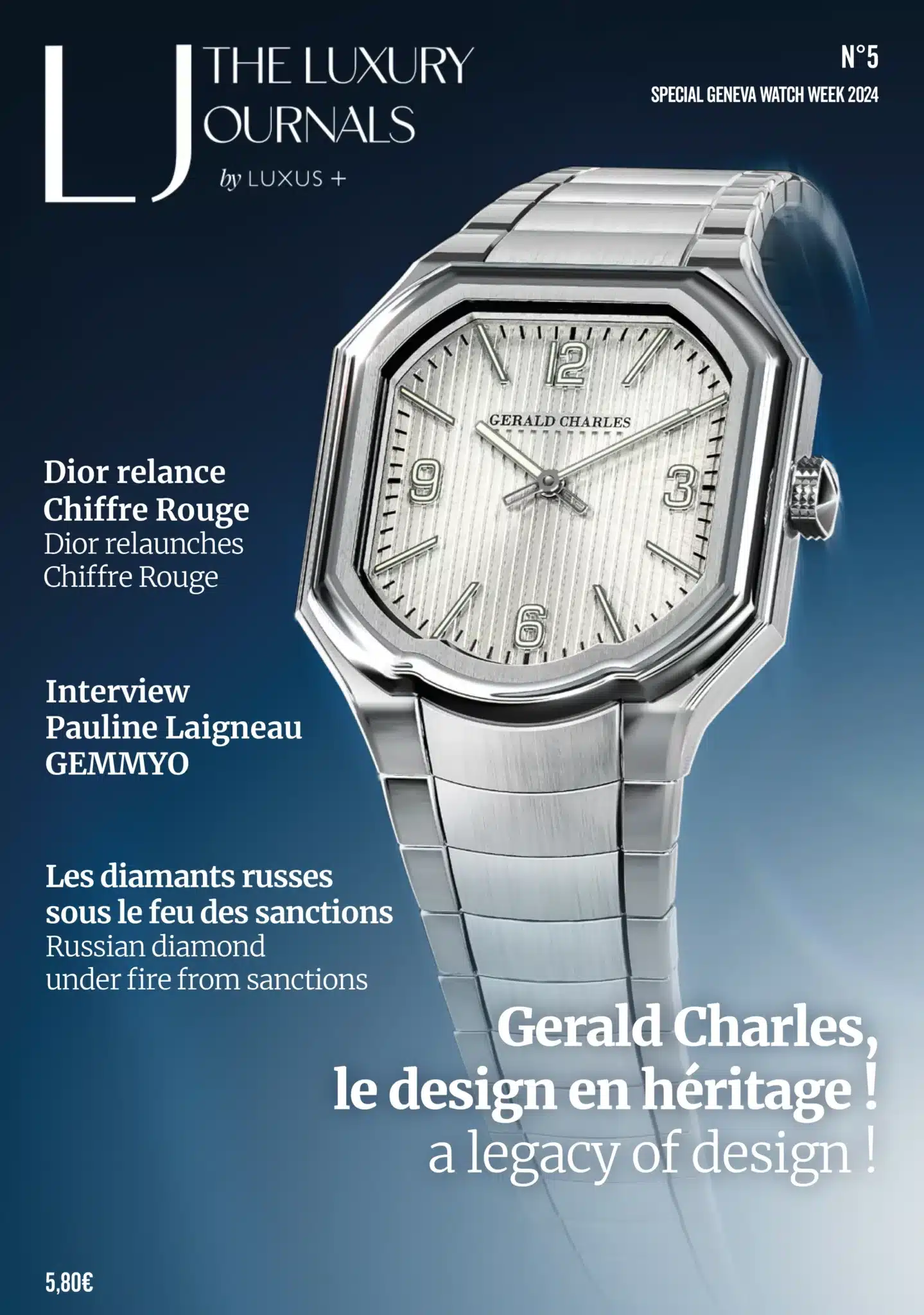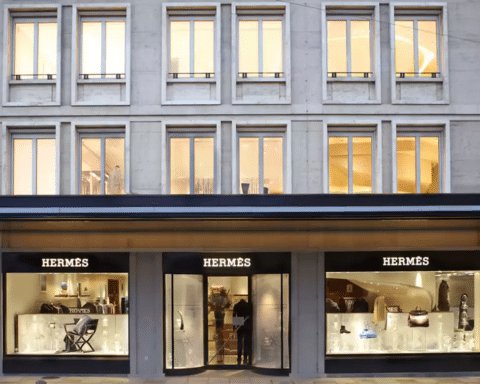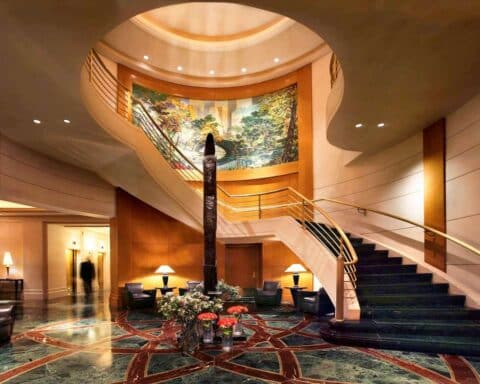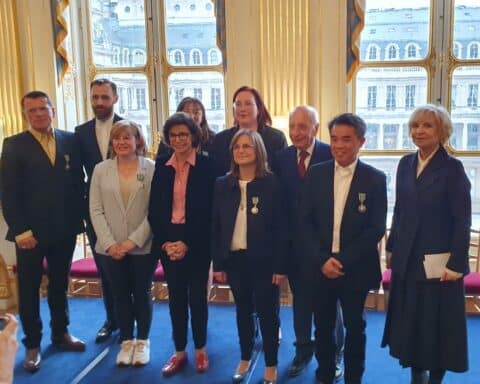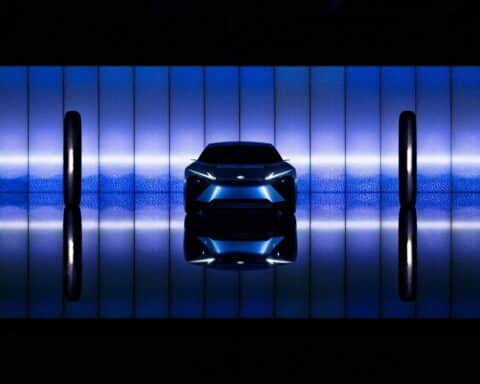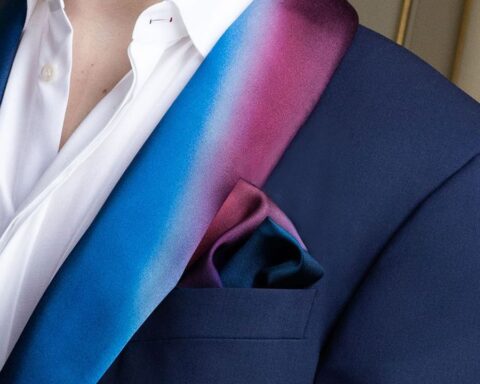[vc_row njt-role=”people-in-the-roles” njt-role-user-roles=”administrator,editor,author,armember”][vc_column][vc_column_text]
As seen in the first part, department stores and luxury boutiques compete in ingenuity to capture the attention of their customers and arouse their desire. More than a scenographic design, it is about knowing and serving the customer better. In this field, they can make the difference with e-commerce platforms unable to provide a wide range of emotions born of a unique, memorable, and fundamentally human customer experience.
Dive into the heart of retail, the historical model of luxury distribution, in the light of the post-Covid era and the extended virtual worlds of Web 3.
Virtual Commerce and borderless customer experience
With channels that go far beyond the physical store, e-commerce site, and social networks, luxury brands need to ensure a consistent experience wherever the customer is. Yet, according to MAD’s latest white paper, “Processing Emotions,” 66% of customers who perceive some form of failure in the omnichannel brand experience would be far more likely to turn away from the brand.
While technology is becoming rare in luxury stores, it is becoming much more visible outside the store. Temporary exhibitions, events, and trade shows are all becoming pretexts for transporting customers into immersive 3D worlds. New experiential spaces, propelled by the surge of this decentralized internet called Web3. An approach that contributes as much to a personalized and community-based extension of the in-store experience as to democratization via the blockchain of the use of crypto-currencies and rare digital objects known as NFT (Non-Fungible Token).
Web 3 and virtual stores
With Web 3, the remote store experience takes on a new community and immersive dimension. After having experienced the data consultation phase at the beginning of the Internet (web1), the data consultation and creation phase via the blogosphere and social networks, it’s time for the next step. A synthesis of the two previous periods, Web 3 adds ownership. In other words, Internet users can finally regain control over their creations and monetize them.
The best-known expression of this new “Far Web” has long been the “metaverse.” However, since Mark Zuckerberg preempted the word meta last year to rename the parent company of his Facebook and Instagram companies, we now speak more readily of “decentralized virtual universes.” Virtual universes that appeared around the year 2000 (1997 in France with the Second World by Canal +, then 2007 with Second Life) were never known as much craze as during these last two years.
Thus, the concept of the Second World, which allowed one to wander through the streets of a pixelated Paris, was revived in 2023 with the Love In Paris project by Metaverse Studio x Sandbox. An experience allows visiting emblematic places and meeting iconic characters like Edith Piaf, Jules Vernes or Victor Hugo.

Stéphane Gallieni, the founder of the luxury creative agency Balistik Art, is also a pioneer of Web 3, a field to which he has just dedicated a didactic book. His agency was behind the first brand activations on what was the very first international metaverse: Second Life. In 2007, he accompanied such prestigious companies as Jean-Paul Gaultier, Lancôme (at the time owned by the Courtin Clarins family), and Thierry Mugler.
A proto-metaverse whose success was as dazzling as it was furtive since this virtual world fell into disuse one year later. It was not until 2021 that the metaverse was back in the news, generating more than 150 different virtual worlds worldwide, such as Roblox or Decentraland.

Boutique virtuelle
For Stéphane Gallieni, despite the extreme diversity of metaverse, the model has its invariants: “They are virtual universes, immersive, interwoven and above all persistent (updated in real-time even when the user is not connected). An experience lived in the skin of his avatar, halfway between the interaction of social networks and the playful universe of video games.”
The virtual store appears to be the most widespread use case among retailers wishing to enter these new worlds. This model can resolve a real sticking point in the digital luxury experience: distancing the luxury product by 2D. On the other hand, 3D allows the customer to observe the luxury product from all angles. With the technological advances in augmented reality and 4K ultra high definition, the customer can even try on a product with a confounding degree of realism in subjective view, as if he were the one wearing the ring or the watch in question. A digital twin that his avatar can freely wear as such or just try on for physical purchase. He can then pay with his credit card or other payment solutions. The result is “a memorable experience halfway between what the customer would have experienced in a store and the facility commerce (open 24/7)”.
This retail 3.0 or V commerce (Virtual Commerce) is made up of physical spaces mixing in-store and digital experiences. Stéphane Galienni (Balistik Art) highlights two points of extension that respond to this emerging V commerce in the luxury experience. On the one hand, augmented reality devices on mobile applications or in-store where the customer can receive reward points according to their engagement and actions. On the other hand, V commerce can take the form of a virtual duplicate of the physical store – even in a fancy form – with an e-commerce function in virtual shopping, as at Lacoste with its UNDW3 project.
Pioneers
“Some companies took the lead. Not everything was perfect, but this communication effect around interesting initiatives allowed us to see the fundamentals of tomorrow’s point of the sale taking shape,” notes Stéphane Gallieni (Balistik Art).

Present at Vivatech 2022, Dior unveiled a preview of its augmented reality experience, allowing Internet and mobile users to walk through the Dior 30 Montaigne boutique in its virtual version. Since then, other initiatives have been launched. The German leather goods brand EEVARIA. Ria designed its virtual store with the agency Rave. Space, presenting its products in 3D, while the Parisian antique dealer Gismondo & Darmo, with the startup Societhy, proposed a virtual gallery where furniture, paintings, and sculptures were sold in the form of ultra-high-definition NFTs that also gave access to the physical work.

However, the founder of the Balistik Art agency warns professionals about most recent web3 initiatives that are still too much executed from a web2 angle, in particular by referring to simple 2D e-commerce product sheets: “Often there is a lack of understanding of the audiences, of the tools as well as of the field of possibilities. In addition, too many people remain convinced that these virtual worlds are only accessible via an expensive Oculus headset. However, it is perfectly possible to access such immersive experiences via a simple smartphone or laptop.”
Gucci: a good student of retail 3.0
On the other hand, Gucci is one of the good students of this retail 3.0. The Italian brand has taken the time to experiment with a number of metaverses, such as Zepeto, Sandbox, and Roblox, which has enabled it to position itself in a virtual universe in line with its values and target audience. Zepeto, a South Korean social media platform used by 62% of women aged 15 to 25, is particularly relevant for luxury brands wishing to talk to future luxury customers. These are first-time buyers who are buying their first perfume or handbag with a status-oriented logic. The sports equipment manufacturer Nike with its Nikeland on Roblox, has also perfectly assimilated the expectations and cultural codes linked to the web3. Stéphane Galienni (Balistik Art) specifies that, contrary to popular belief, the Web 3 experience is mainly carried by members of the Alpha generation, not the Z generation.

On the department store side, Printemps, which was looking to overhaul its image, developed last year “Mon Premier Virtual Store,” its own virtual micro-universe with the startup Meta.VRS, present at the NRF show. An immersive experience where it was possible to buy five clothes imagined for the new identity of the department store as well as NFTs designed by the artist Romain Froquet. The customer could also proceed to virtual fittings and even receive his photo in the outfit of his choice via the Dress X application.
This opportunity to rejuvenate its target allowed it to be in first place on the podium. A former Parisian luxury shopping temple employee, Nicolas Rebet (RETAILSCOPE), agrees. “Ten years ago, Printemps didn’t even have an e-commerce site, and today it’s a FEVAD 2022 award.”

Other establishments are doing well, such as Bloomingdale’s. The American department store has “event-driven” its Web 3 initiatives, giving Internet users an excuse to return. For Christmas, it has developed themed spaces dedicated to luxury brands such as Chanel and Ralph Lauren, with the help of Emperia, the leader in virtual reality applied to retail, fashion, and art.

Phygital cultural events
The luxury customer experience can also be enhanced by phygital cultural events in parallel to the in-store visit. Thus, immersive digital experiences can now be found in temporary exhibitions, whose organization is internalized by the brand. Sabine Temin (LUXURYTAIL) talks about the animations deployed last December, such as the Grand Numéro de Chanel at the Grand Palais ephemeral or Dior Beauté. The latter operation offered an augmented reality experience to see the constellations, as part of its Dream Workshop, in the heart of the Parc Monceau.

Currently, the LV Dream exhibition by Maison Louis Vuitton, located in the former La Belle Jardinière department store – opposite the Samaritaine – shows an exemplary sense of experiential design outside the walls. In addition to a café, a chocolate shop, and a souvenir area, LV Dream offers no less than nine interactive rooms. Visitors have access to a large panorama of original works resulting from the permanent dialogue between artists and the trunk products of the number one luxury brand. For Sabine Temin (LUXURYTAIL), the digital portrait (AI installation) of the founder of Louis Vuitton, by Chinese artist Cao Fei, is the highlight of this experience, halfway between phygital exhibition and the commercial point of contact.
“Now, if you want to see a Dior exhibition, you’ll go to 30 Montaigne and not necessarily to the Museum of Decorative Arts or the Palais Galliera,” says Sabine Temin (LUXURYTAIL).
Crypto-currencies and NFT
Another myth to dispel is that positioning oneself in the web3 does not necessarily mean that luxury retailers have to open their virtual stores. Bridges exist in the real world, especially when it comes to payment methods and rewards offered to customers. In these conditions, the entry point of a retailer in the web 3 can start with the question of an opening to cryptocurrency?
Facing the skeptics, Stéphane Gallieni has the answer: “For those who would say that they have other priority investments or that the ROI would leave something to be desired, I want to tell them this: to get cryptos or NFTs, you need a crypto wallet (digital wallet allowing to store crypto assets). Now, there will be 84 million wallet owners in 2022, 30 million of which are on Metamask. Thus, the digital twin in the form of an NFT of a luxury coin may be sold at a tiny fraction of the price of the physical product in stores, but it could potentially seduce millions of Internet users interested in these new uses.”
Proof of this is that 25% of the assets owned by Americans from the Millennials and Z generations are in the form of crypto assets. Beyond acquiring an aesthetic digital work in the image of the House’s values, the customer here does not give his data as he would give to GAFAM or the company via email. On the contrary, they retain ownership of their personal data and can even buy what they want in the store.
Although it went almost unnoticed, Philipp Plein, a German designer with a bling and rock universe, opened his e-commerce account in August 2022. He was very forward-thinking and immediately opened the payment methods to about fifteen different cryptocurrencies. In the Philipp Plein store, too, it is now possible to pay for purchases in crypto-currencies. In the same spirit, Courbet, the Place Vendôme fine jewelry house with values rooted in sustainable commitment, has partnered with the start-up LUNU, which offers a crypto payment terminal installed at points of sale.

Gentrification of the metaverse
For Stéphane Gallieni (Balistik Art), the most striking initiative to date in the luxury industry remains Gucci Town, which he describes as the “gentrification of the metaverse.” This operation is one of the 25 major use cases presented in La Vague Web 3, his latest book co-authored with Stéphane Truphème. “The brand’s permanent presence on Roblox allows us to explain Gucci to young people. The brand thus benefits from a space of socialization, exposure, and a store where the smallest sweatshirt or pair of sneakers may cost 12-30 dollars. Still, it is made available on virtual merchant spaces that can potentially attract millions of players.”
Nike has also understood this with its Nikeland. “A new target around 15 years old will come for playful activities and be able to customize their avatar for a few dollars. That almost creates a sector diversification on gaming and on the virtual object.”

Two luxury companies that have grasped a nascent business model inspired by Direct-To-Consumer, D2A, and Direct To Avatar. “By creating my virtual luxury product on games like Animal Crossings or Fortnite, I duplicate it endlessly, which creates as much revenue. When you add in the virtual currency from the game, it can translate into a paying transaction for the company.”
To conclude, the luxury customer experience in 2023 resembles a Maslow pyramid according to Delphine de Vitry (Cabinet MAD), “It’s pretty complicated to fully enjoy an experience with a sales consultant, to fully feel the relationship to a product, if you’re in an environment in which you don’t feel good.” Clearly, while the point of sale remains the priority for 95% of luxury customers to be advised (Boston Consulting Group), it will need to ensure excellence in its execution and serve the expectations of new generations.
Read also > [Investigation] What’s new in Luxury Retail? (Part 3/4)
Featured photo : © Fortnite[/vc_column_text][/vc_column][/vc_row][vc_row njt-role=”not-logged-in”][vc_column][vc_column_text]
As seen in the first part, department stores and luxury boutiques compete in ingenuity to capture the attention of their customers and arouse their desire. More than a scenographic design, it is about knowing and serving the customer better. In this field, they can make the difference with e-commerce platforms unable to provide a wide range of emotions born of a unique, memorable, and fundamentally human customer experience.
Dive into the heart of retail, the historical model of luxury distribution, in the light of the post-Covid era and the extended virtual worlds of Web 3.
Virtual Commerce and borderless customer experience
With channels that go far beyond the physical store, e-commerce site, and social networks, luxury brands need to ensure a consistent experience wherever the customer is. Yet, according to MAD’s latest white paper, “Processing Emotions,” 66% of customers who perceive some form of failure in the omnichannel brand experience would be far more likely to turn away from the brand.
While technology is becoming rare in luxury stores, it is becoming much more visible outside the store. Temporary exhibitions, events, and trade shows are all becoming pretexts for transporting customers into immersive 3D worlds. New experiential spaces, propelled by the surge of this decentralized internet called Web3. An approach that contributes as much to a personalized and community-based extension of the in-store experience as to democratization via the blockchain of the use of crypto-currencies and rare digital objects known as NFT (Non-Fungible Token).
Web 3 and virtual stores
With Web 3, the remote store experience takes on a new community and immersive dimension. After having experienced the data consultation phase at the beginning of the Internet (web1), the data consultation and creation phase via the blogosphere and social networks, it’s time for the next step. A synthesis of the two previous periods, Web 3 adds ownership. In other words, Internet users can finally regain control over their creations and monetize them.
The best-known expression of this new “Far Web” has long been the “metaverse.” However, since Mark Zuckerberg preempted the word meta last year to rename the parent company of his Facebook and Instagram companies, we now speak more readily of “decentralized virtual universes.” Virtual universes that appeared around the year 2000 (1997 in France with the Second World by Canal +, then 2007 with Second Life) were never known as much craze as during these last two years.
Thus, the concept of the Second World, which allowed one to wander through the streets of a pixelated Paris, was revived in 2023 with the Love In Paris project by Metaverse Studio x Sandbox. An experience allows visiting emblematic places and meeting iconic characters like Edith Piaf, Jules Vernes or Victor Hugo.

Stéphane Gallieni, the founder of the luxury creative agency Balistik Art, is also a pioneer of Web 3, a field to which he has just dedicated a didactic book. His agency was behind the first brand activations on what was the very first international metaverse: Second Life. In 2007, he accompanied such prestigious companies as Jean-Paul Gaultier, Lancôme (at the time owned by the Courtin Clarins family), and Thierry Mugler.
A proto-metaverse whose success was as dazzling as it was furtive since this virtual world fell into disuse one year later. It was not until 2021 that the metaverse was back in the news, generating more than 150 different virtual worlds worldwide, such as Roblox or Decentraland.

Boutique virtuelle
For Stéphane Gallieni, despite the extreme diversity of metaverse, the model has its invariants: “They are virtual universes, immersive, interwoven and above all persistent (updated in real-time even when the user is not connected). An experience lived in the skin of his avatar, halfway between the interaction of social networks and the playful universe of video games.”
The virtual store appears to be the most widespread use case among retailers wishing to enter these new worlds. This model can resolve a real sticking point in the digital luxury experience: distancing the luxury product by 2D. On the other hand, 3D allows the customer to observe the luxury product from all angles. With the technological advances in augmented reality and 4K ultra high definition, the customer can even try on a product with a confounding degree of realism in subjective view, as if he were the one wearing the ring or the watch in question. A digital twin that his avatar can freely wear as such or just try on for physical purchase. He can then pay with his credit card or other payment solutions. The result is “a memorable experience halfway between what the customer would have experienced in a store and the facility commerce (open 24/7)”.
This retail 3.0 or V commerce (Virtual Commerce) is made up of physical spaces mixing in-store and digital experiences. Stéphane Galienni (Balistik Art) highlights two points of extension that respond to this emerging V commerce in the luxury experience. On the one hand, augmented reality devices on mobile applications or in-store where the customer can receive reward points according to their engagement and actions. On the other hand, V commerce can take the form of a virtual duplicate of the physical store – even in a fancy form – with an e-commerce function in virtual shopping, as at Lacoste with its UNDW3 project.
Pioneers
“Some companies took the lead. Not everything was perfect, but this communication effect around interesting initiatives allowed us to see the fundamentals of tomorrow’s point of the sale taking shape,” notes Stéphane Gallieni (Balistik Art).

Present at Vivatech 2022, Dior unveiled a preview of its augmented reality experience, allowing Internet and mobile users to walk through the Dior 30 Montaigne boutique in its virtual version. Since then, other initiatives have been launched. The German leather goods brand EEVARIA. Ria designed its virtual store with the agency Rave. Space, presenting its products in 3D, while the Parisian antique dealer Gismondo & Darmo, with the startup Societhy, proposed a virtual gallery where furniture, paintings, and sculptures were sold in the form of ultra-high-definition NFTs that also gave access to the physical work.

However, the founder of the Balistik Art agency warns professionals about most recent web3 initiatives that are still too much executed from a web2 angle, in particular by referring to simple 2D e-commerce product sheets: “Often there is a lack of understanding of the audiences, of the tools as well as of the field of possibilities. In addition, too many people remain convinced that these virtual worlds are only accessible via an expensive Oculus headset. However, it is perfectly possible to access such immersive experiences via a simple smartphone or laptop.”
Gucci: a good student of retail 3.0
[…][/vc_column_text][vc_cta h2=”This article is reserved for subscribers.” h2_font_container=”tag:h2|font_size:16|text_align:left” h2_use_theme_fonts=”yes” h4=”Subscribe now !” h4_font_container=”tag:h2|font_size:32|text_align:left|line_height:bas” h4_use_theme_fonts=”yes” txt_align=”center” color=”black” add_button=”right” btn_title=”I SUBSCRIBE !” btn_color=”danger” btn_size=”lg” btn_align=”center” use_custom_fonts_h2=”true” use_custom_fonts_h4=”true” btn_button_block=”true” btn_custom_onclick=”true” btn_link=”url:https%3A%2F%2Fluxus-plus.com%2Fen%2Fsubscriptions-and-newsletter-special-offer-valid-until-september-30-2020-2-2%2F”]Get unlimited access to all articles and live a new reading experience, preview contents, exclusive newsletters…
Already have an account ? Please log in.[/vc_cta][vc_column_text]Featured photo : © Fortnite[/vc_column_text][/vc_column][/vc_row][vc_row njt-role=”people-in-the-roles” njt-role-user-roles=”subscriber,customer”][vc_column][vc_column_text]
As seen in the first part, department stores and luxury boutiques compete in ingenuity to capture the attention of their customers and arouse their desire. More than a scenographic design, it is about knowing and serving the customer better. In this field, they can make the difference with e-commerce platforms unable to provide a wide range of emotions born of a unique, memorable, and fundamentally human customer experience.
Dive into the heart of retail, the historical model of luxury distribution, in the light of the post-Covid era and the extended virtual worlds of Web 3.
Virtual Commerce and borderless customer experience
With channels that go far beyond the physical store, e-commerce site, and social networks, luxury brands need to ensure a consistent experience wherever the customer is. Yet, according to MAD’s latest white paper, “Processing Emotions,” 66% of customers who perceive some form of failure in the omnichannel brand experience would be far more likely to turn away from the brand.
While technology is becoming rare in luxury stores, it is becoming much more visible outside the store. Temporary exhibitions, events, and trade shows are all becoming pretexts for transporting customers into immersive 3D worlds. New experiential spaces, propelled by the surge of this decentralized internet called Web3. An approach that contributes as much to a personalized and community-based extension of the in-store experience as to democratization via the blockchain of the use of crypto-currencies and rare digital objects known as NFT (Non-Fungible Token).
Web 3 and virtual stores
With Web 3, the remote store experience takes on a new community and immersive dimension. After having experienced the data consultation phase at the beginning of the Internet (web1), the data consultation and creation phase via the blogosphere and social networks, it’s time for the next step. A synthesis of the two previous periods, Web 3 adds ownership. In other words, Internet users can finally regain control over their creations and monetize them.
The best-known expression of this new “Far Web” has long been the “metaverse.” However, since Mark Zuckerberg preempted the word meta last year to rename the parent company of his Facebook and Instagram companies, we now speak more readily of “decentralized virtual universes.” Virtual universes that appeared around the year 2000 (1997 in France with the Second World by Canal +, then 2007 with Second Life) were never known as much craze as during these last two years.
Thus, the concept of the Second World, which allowed one to wander through the streets of a pixelated Paris, was revived in 2023 with the Love In Paris project by Metaverse Studio x Sandbox. An experience allows visiting emblematic places and meeting iconic characters like Edith Piaf, Jules Vernes or Victor Hugo.

Stéphane Gallieni, the founder of the luxury creative agency Balistik Art, is also a pioneer of Web 3, a field to which he has just dedicated a didactic book. His agency was behind the first brand activations on what was the very first international metaverse: Second Life. In 2007, he accompanied such prestigious companies as Jean-Paul Gaultier, Lancôme (at the time owned by the Courtin Clarins family), and Thierry Mugler.
A proto-metaverse whose success was as dazzling as it was furtive since this virtual world fell into disuse one year later. It was not until 2021 that the metaverse was back in the news, generating more than 150 different virtual worlds worldwide, such as Roblox or Decentraland.

Boutique virtuelle
For Stéphane Gallieni, despite the extreme diversity of metaverse, the model has its invariants: “They are virtual universes, immersive, interwoven and above all persistent (updated in real-time even when the user is not connected). An experience lived in the skin of his avatar, halfway between the interaction of social networks and the playful universe of video games.”
The virtual store appears to be the most widespread use case among retailers wishing to enter these new worlds. This model can resolve a real sticking point in the digital luxury experience: distancing the luxury product by 2D. On the other hand, 3D allows the customer to observe the luxury product from all angles. With the technological advances in augmented reality and 4K ultra high definition, the customer can even try on a product with a confounding degree of realism in subjective view, as if he were the one wearing the ring or the watch in question. A digital twin that his avatar can freely wear as such or just try on for physical purchase. He can then pay with his credit card or other payment solutions. The result is “a memorable experience halfway between what the customer would have experienced in a store and the facility commerce (open 24/7)”.
This retail 3.0 or V commerce (Virtual Commerce) is made up of physical spaces mixing in-store and digital experiences. Stéphane Galienni (Balistik Art) highlights two points of extension that respond to this emerging V commerce in the luxury experience. On the one hand, augmented reality devices on mobile applications or in-store where the customer can receive reward points according to their engagement and actions. On the other hand, V commerce can take the form of a virtual duplicate of the physical store – even in a fancy form – with an e-commerce function in virtual shopping, as at Lacoste with its UNDW3 project.
Pioneers
“Some companies took the lead. Not everything was perfect, but this communication effect around interesting initiatives allowed us to see the fundamentals of tomorrow’s point of the sale taking shape,” notes Stéphane Gallieni (Balistik Art).

Present at Vivatech 2022, Dior unveiled a preview of its augmented reality experience, allowing Internet and mobile users to walk through the Dior 30 Montaigne boutique in its virtual version. Since then, other initiatives have been launched. The German leather goods brand EEVARIA. Ria designed its virtual store with the agency Rave. Space, presenting its products in 3D, while the Parisian antique dealer Gismondo & Darmo, with the startup Societhy, proposed a virtual gallery where furniture, paintings, and sculptures were sold in the form of ultra-high-definition NFTs that also gave access to the physical work.

However, the founder of the Balistik Art agency warns professionals about most recent web3 initiatives that are still too much executed from a web2 angle, in particular by referring to simple 2D e-commerce product sheets: “Often there is a lack of understanding of the audiences, of the tools as well as of the field of possibilities. In addition, too many people remain convinced that these virtual worlds are only accessible via an expensive Oculus headset. However, it is perfectly possible to access such immersive experiences via a simple smartphone or laptop.”
Gucci: a good student of retail 3.0
[…][/vc_column_text][vc_cta h2=”This article is reserved for subscribers.” h2_font_container=”tag:h2|font_size:16|text_align:left” h2_use_theme_fonts=”yes” h4=”Subscribe now !” h4_font_container=”tag:h2|font_size:32|text_align:left|line_height:bas” h4_use_theme_fonts=”yes” txt_align=”center” color=”black” add_button=”right” btn_title=”I SUBSCRIBE !” btn_color=”danger” btn_size=”lg” btn_align=”center” use_custom_fonts_h2=”true” use_custom_fonts_h4=”true” btn_button_block=”true” btn_custom_onclick=”true” btn_link=”url:https%3A%2F%2Fluxus-plus.com%2Fen%2Fsubscriptions-and-newsletter-special-offer-valid-until-september-30-2020-2-2%2F”]Get unlimited access to all articles and live a new reading experience, preview contents, exclusive newsletters…
Already have an account ? Please log in.[/vc_cta][vc_column_text]Featured photo : © Fortnite[/vc_column_text][/vc_column][/vc_row][vc_row njt-role=”people-in-the-roles” njt-role-user-roles=”subscriber,customer”][vc_column][vc_column_text]


